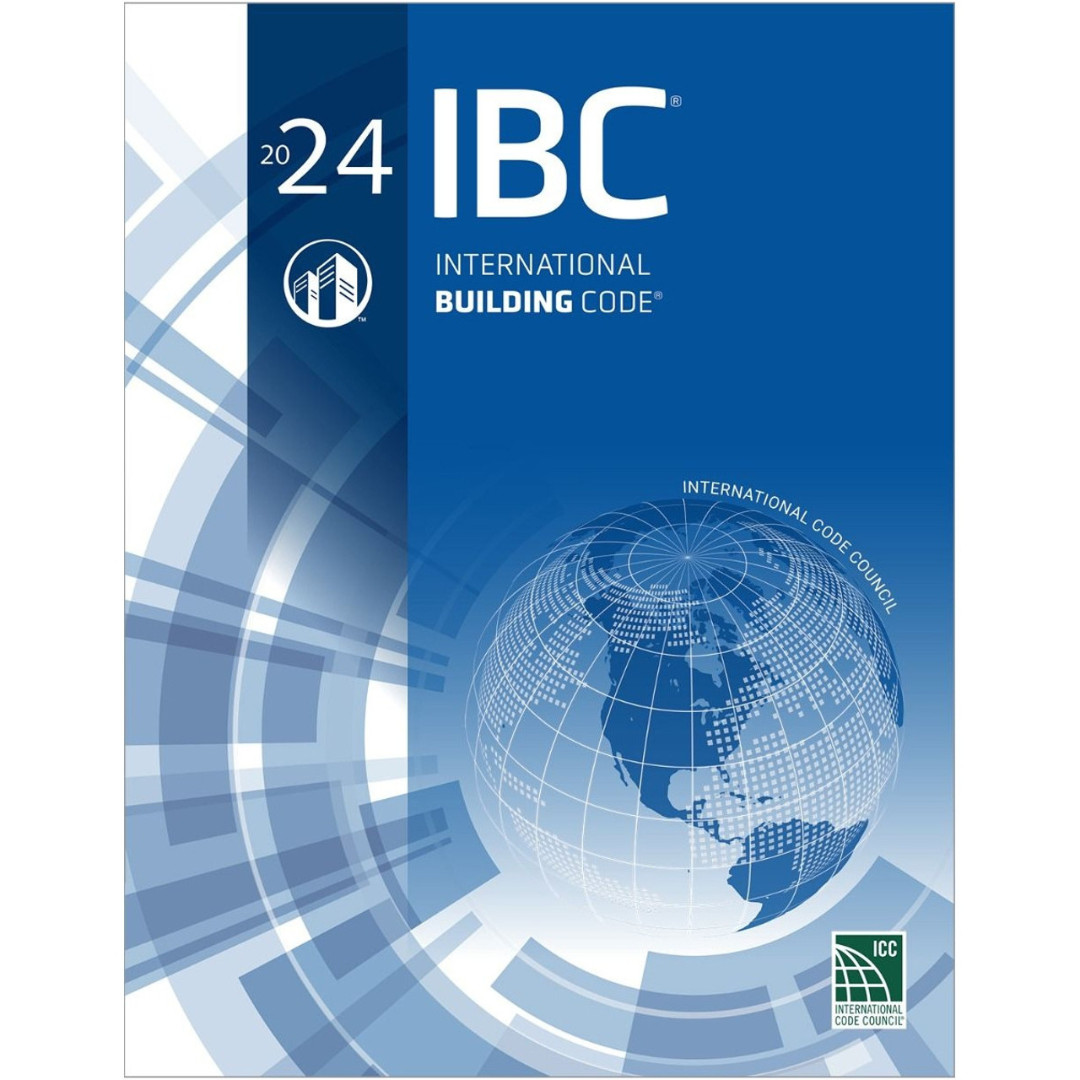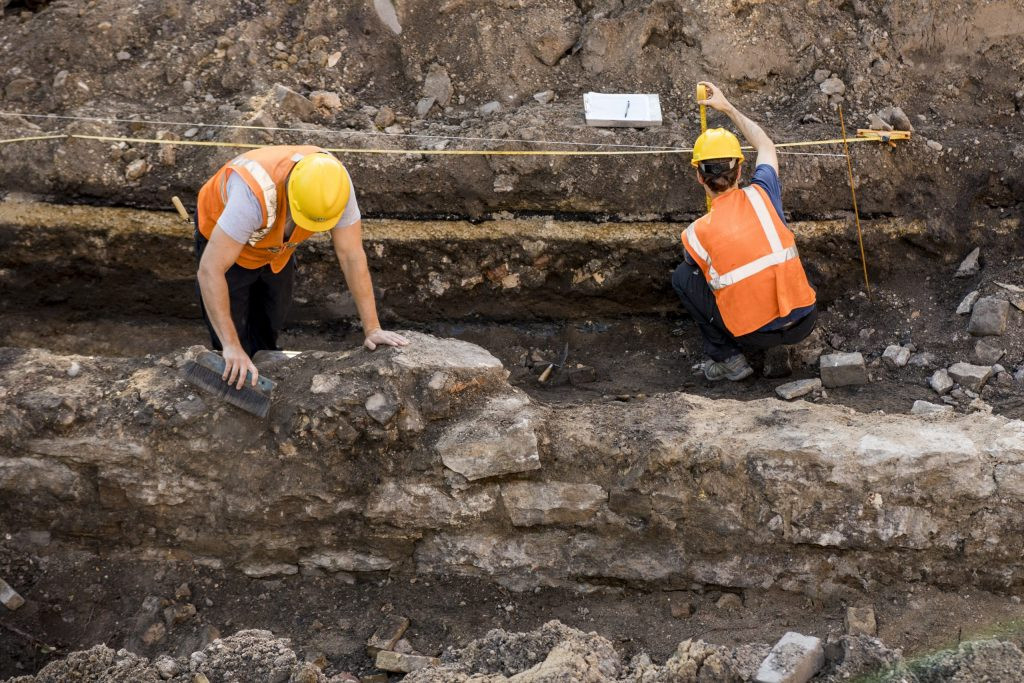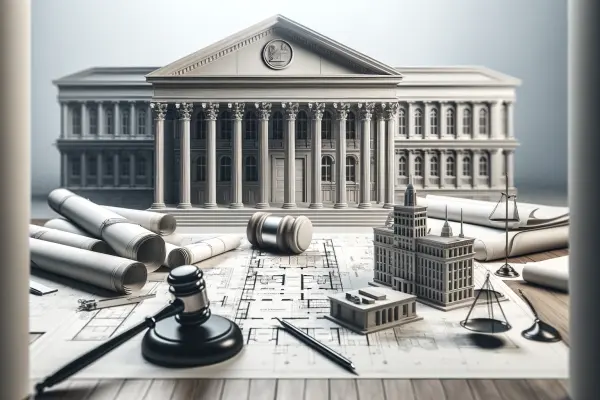Restoration and reconstruction of historic buildings in the USA are governed by a complex system of federal laws. In 2025, U.S. building reconstruction legislation covers over 90,000 properties listed in the National Register of Historic Places. Federal reconstruction requirements include compliance with the Secretary of the Interior’s Standards and eligibility for tax credits of up to 20% of qualified expenses through the Historic Tax Credit Program.
The cost of restoring historic buildings ranges from $200 to $800 per square foot. It’s not always simple. But it’s effective with proper planning and knowledge of legislative requirements, especially when dealing with a certified historic structure.
Federal Framework: The National Historic Preservation Act
 The National Historic Preservation Act, passed in 1966, became the cornerstone of the modern approach to monument preservation. Section 106 of the NHPA mandates federal agencies to assess the impact on historic properties—like checking the pulse of a living organism before a major operation.
The National Historic Preservation Act, passed in 1966, became the cornerstone of the modern approach to monument preservation. Section 106 of the NHPA mandates federal agencies to assess the impact on historic properties—like checking the pulse of a living organism before a major operation.
A detailed procedure is outlined in the official GSA guide to Section 106, which includes all requirements for the use and protection of cultural heritage. In my work with private clients, I often notice that ignorance of Section 106 of the NHPA leads to project delays of 3-6 months.
“It should be noted that any project affecting buildings older than 50 years or located in historic districts requires prior evaluation by historic preservation services. This applies even to window replacements or roofing work.”
The State Historic Preservation Officer (SHPO) coordinates the application of federal standards at the state level. Architectural evaluations of historic buildings are conducted by certified professionals with at least 5 years of experience. It’s important to note that qualified rehabilitation expenditures must be documented at every stage.
SHPO has 30 days to review an application, but the overall Section 106 process can take 6-12 months depending on the complexity of the property. Violations of requirements can lead to fines, which vary by state: California and New York have the strictest oversight. In one Chicago project, the owner received a violation notice for unauthorized window frame replacements.
Heritage Preservation Standards: Four Approaches
The Secretary of the Interior's Standards for the Treatment of Historic Properties define four primary methods for working with historic buildings. Each approach has strict criteria and limitations. Why such detail? Because preservation vs. rehabilitation vs. reconstruction requires fundamentally different approaches to design and financing.
A comprehensive guide is available in the official standards of the National Park Service, which recommend consulting professionals early in the project. It is known that character-defining features of historic buildings determine eligibility for Historic Preservation Tax Incentives.
Understanding the differences between these approaches is critical for selecting the optimal project strategy.
| Method | Description | Permissible Changes | Application of Tax Credits |
|---|---|---|---|
| Preservation | Maintaining the current condition | Minimal repair work | Limited |
| Rehabilitation | Adapting to modern use | Functional changes while preserving character | Full application |
| Restoration | Returning to a specific historical period | Removal of later additions | With restrictions |
| Reconstruction | Recreating lost elements | New construction based on historical data | Not applicable |
Choosing the right method determines not only compliance with requirements but also the project’s economic efficiency.
Federal Tax Credit Program: Economic Incentives
The Historic Tax Credit Program provides significant benefits to owners of historic buildings. The 20% tax credit for historic rehabilitation applies to certified historic structures, provided federal standards are met. Considering the structural characteristics of buildings constructed before 1936, the evaluation process can take up to 120 days.
Since 2018, under the Tax Cuts and Jobs Act, the credit is distributed evenly over 5 years instead of a lump sum. Document preparation typically takes 2-3 months, with review periods up to 90 days. In a recent Boston project, the historic building restoration cost was $2.3 million, with tax credits amounting to $460,000.
“In a recent Philadelphia project, the owner of an 1890s building received a tax credit of $340,000 for qualified rehabilitation expenses of $1.7 million. This covered 20% of costs and made the project economically viable.”
Qualified rehabilitation expenditures include structural work, restoration of historic elements, and engineering systems. Thus, Historic Preservation Tax Incentives encourage private investment in heritage preservation. What’s important to understand? Work must comply with heritage conservation best practices.
Historic restoration project financing can combine federal credits with local support programs. A common mistake is starting work before receiving preliminary approval, which forfeits eligibility for credits. Historic preservation consultant services cost $150 to $300 per hour but save tens of thousands of dollars.
Success Story: The Alamo
“The $450 million reconstruction of The Alamo in Texas became a model for applying federal standards. The 1718 complex was strictly regulated by heritage laws requiring the preservation of original limestone walls. The project included 3D scanning for accurate recreation of lost elements. ‘We preserved the soul of The Alamo, bringing it back to life for new generations,’ said architect George Skidmore. By 2024, the site attracts 2.5 million tourists annually, boosting local revenue by $150 million.”
Building Requirements and Zoning for Heritage Properties
 Building codes for historic properties are regulated by the IEBC International Existing Building Code. U.S. historic building zoning establishes specific requirements for appearance and functional use. It should be noted that each state may impose additional restrictions.
Building codes for historic properties are regulated by the IEBC International Existing Building Code. U.S. historic building zoning establishes specific requirements for appearance and functional use. It should be noted that each state may impose additional restrictions.
In practice, I often observe that local heritage preservation commissions can reject a significant portion of reconstruction applications (percentages vary by region). New York and Boston have the strictest oversight, Texas takes a more flexible approach, and California rigorously monitors seismic resistance. In a recent San Francisco project, the architectural review of historic buildings took 4 months instead of the planned two.
Compliance with building codes for restoration requires balancing safety with the preservation of historic character. It is known that modern fire safety requirements can conflict with historic structures. In my work with private clients, I frequently encounter the dilemma: how to integrate a sprinkler system with 18th-century wooden beams?
In such cases, alternative solutions and exemptions are applied. A common mistake is attempting to apply historic building codes without considering historical specifics, leading to approval denials. Sustainable historic preservation methods help find a compromise between requirements and authenticity.
“Considering the structural characteristics of 19th-century buildings, installing modern fire suppression systems requires a creative approach. Concealed installation of utilities in a historic building can increase costs by 15-25%, but it’s necessary to obtain operating permits.”
Regional Regulation and Heritage Preservation Commissions
Local authorities play a key role in regulating restoration. Certified historic building appraisals are conducted by municipal commissions in collaboration with independent experts. What is the cost of an expert appraisal? Heritage preservation consultant services range from $150 to $300 per hour but help avoid costly mistakes.
Commercial historic building renovation is subject to stricter requirements compared to residential properties. Character-defining features of historic buildings are like the DNA of architecture, altering which can strip a property of its status.
Municipal commissions have the authority to impose a one-year moratorium on demolition to explore alternative solutions. Work without approval can lead to administrative fines and requirements to restore the original appearance (fine amounts vary by jurisdiction). Thus, tax credits for historic restoration become not just a bonus but a necessity for a project’s economic viability.
Practical Aspects of Implementing Heritage Preservation Projects
 Cultural resource management (CRM) involves coordination among federal, regional, and local entities. Adaptive reuse of historic structures allows balancing preservation with modern needs. Considering the structural characteristics of 19th-century buildings, such projects require special attention to engineering systems.
Cultural resource management (CRM) involves coordination among federal, regional, and local entities. Adaptive reuse of historic structures allows balancing preservation with modern needs. Considering the structural characteristics of 19th-century buildings, such projects require special attention to engineering systems.
In one project last season, an old textile factory was transformed into a modern office center while preserving all key architectural elements. It is known that adaptive reuse of historic structures reduces new construction costs by 15-25%.
Heritage conservation best practices rely on an interdisciplinary approach. Sustainable historic preservation methods integrate LEED environmental standards with historic requirements. It should be noted that such integration requires additional consultations with energy efficiency experts.
This increases initial costs by 5-10% but reduces operational expenses by 20% in the long term. The key is engaging specialists at the planning stage, not after work begins. In my work with private clients, I often notice that skimping on design leads to overpayments during construction.
“Preservation versus rehabilitation versus reconstruction is not just a choice of approach but a philosophy of engaging with cultural heritage. Each method has its place depending on the property’s condition, historical value, and intended use.”
Conclusion
U.S. building reconstruction legislation is a multi-layered system where federal standards intertwine with regional specifics. Restoration of historic buildings in the USA is not just about compliance with regulations but also a demonstration of respect for the nation’s cultural memory. Proper understanding of The Secretary of the Interior's Standards for the Treatment of Historic Properties and timely consultation with specialists are the keys to successfully implementing a project and securing all available benefits through the Historic Tax Credit Program.

